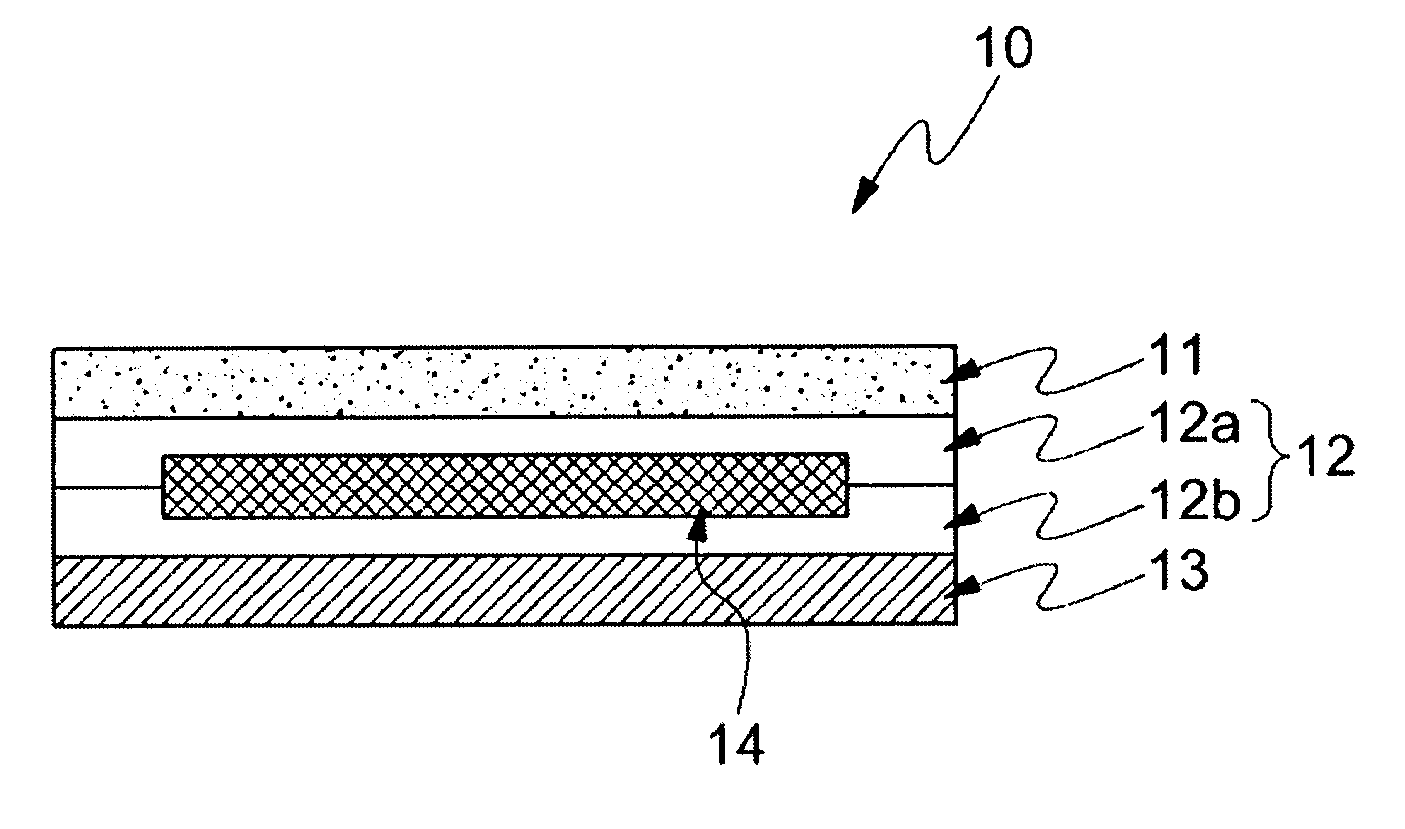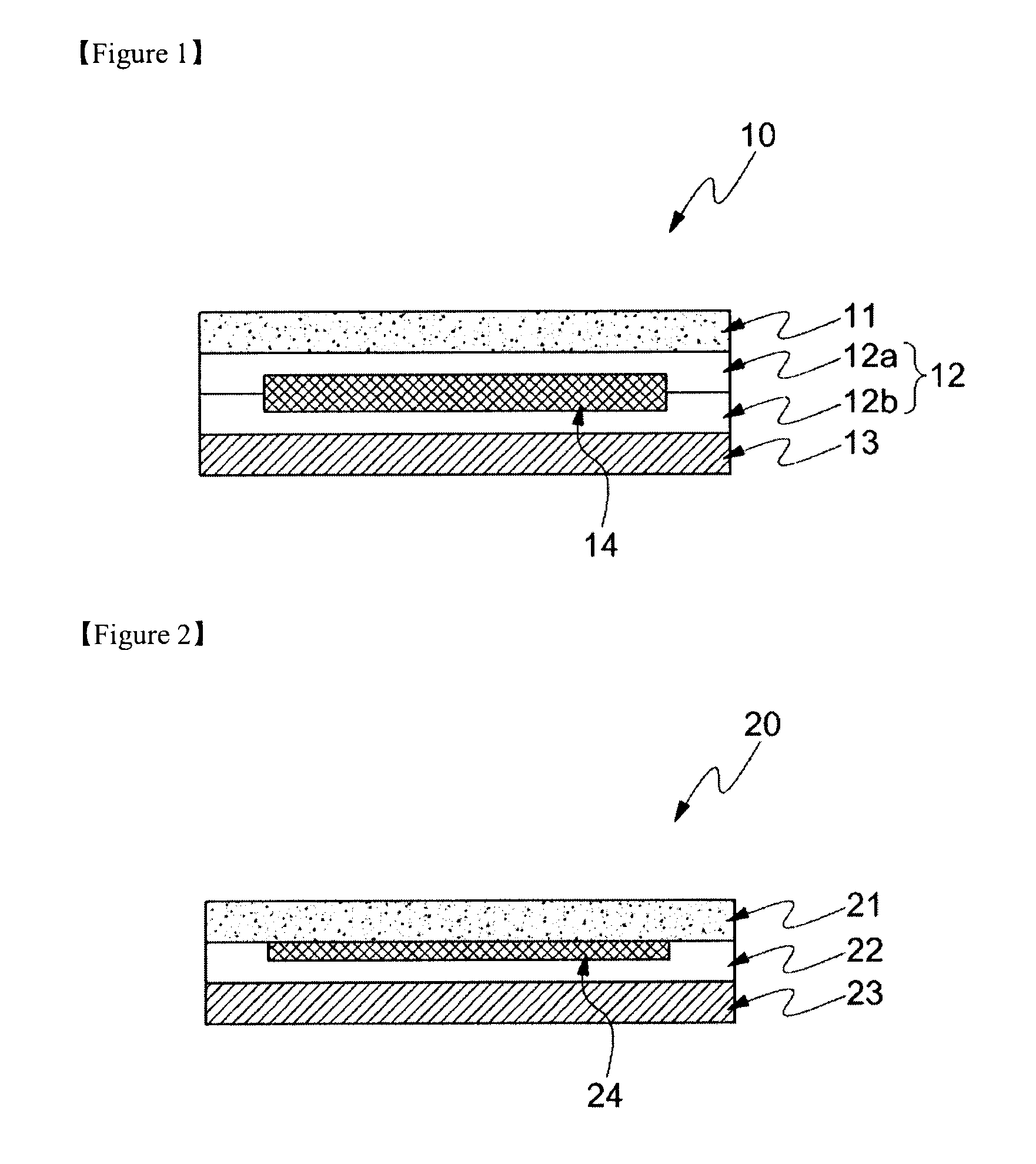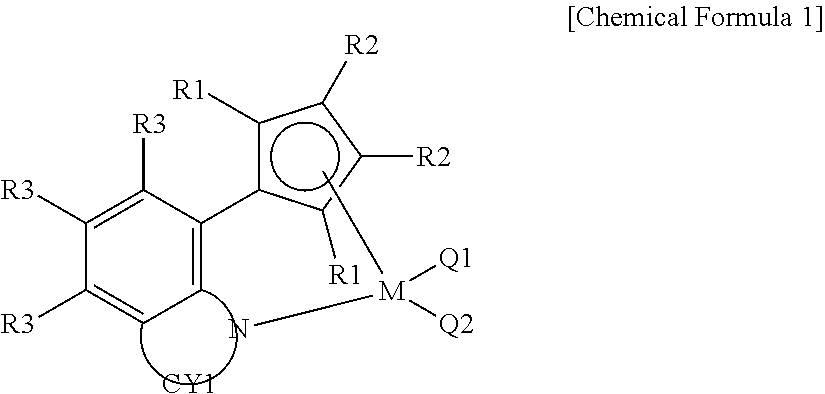Encapsulation composition for photovoltaic cell module and photovoltaic cell module comprising the same
- Summary
- Abstract
- Description
- Claims
- Application Information
AI Technical Summary
Benefits of technology
Problems solved by technology
Method used
Image
Examples
examples 2 to 3
Preparative Examples 2 to 3
Preparation of Ethylene-Alpha Olefin Copolymers
[0133]Ethylene-alpha olefin copolymers were prepared in the same manner as in Preparative Example 1, except that contents of the hexane solvent, the 1-octene monomer and the ethylene monomer were changed as listed in the following Table 1.
Preparative Example 4
Preparation of Ethylene-Alpha Olefin Copolymer
[0134]An ethylene-alpha olefin copolymer was prepared in the same manner as in Preparative Example 1, except that the 1.5 L continuously stirred reactor pre-heated at a temperature of 154° C. was used.
TABLE 1PolymerizationEthyleneAlpha olefinsolventmonomermonomerPreparative Example 13.20 kg / h0.63 kg / h0.55 kg / hPreparative Example 23.20 kg / h0.63 kg / h0.55 kg / hPreparative Example 33.20 kg / h0.63 kg / h0.55 kg / hPreparative Example 43.20 kg / h0.63 kg / h0.55 kg / hPolymerization solvent: hexaneAlpha olefin monomer: 1-octene
Comparative Preparative Example 1
Ethylene-Alpha Olefin Copolymer
[0135]No separate ethylene-alpha olefi...
example 8
Preparative Example 8
Preparation of Silane-Modified Ethylene-Alpha Olefin Copolymer
[0151]A vinyl silane-modified ethylene / 1-octene copolymer was prepared in the same manner as in Preparative Example 5, except that the vinyltrimethoxy silane was used at a content of 8.0 parts by weight (0.8 kg / h), based on 100 parts by weight of the silane-modified ethylene / 1-octene copolymer.
Comparative Preparative Example 4
Preparation of Silane-Modified Ethylene-Alpha Olefin Copolymer
[0152]A vinyl silane-modified ethylene / 1-octene copolymer was prepared in the same manner as in Preparative Example 5, except that the ethylene / 1-octene copolymer (ENGAGE 8452 manufactured by Dow Chemicals) of Preparative Example 3 was used as the ethylene-alpha olefin copolymer.
example 1
[0153]80 g / min of the ethylene-alpha olefin copolymer prepared in Preparative Example 1, 20 g / min of the silane-modified ethylene-alpha olefin copolymer prepared in Preparative Example 5, 0.5 g / min of a benzotriazol-based ultraviolet absorber (Cyasorb UV-531) and 0.5 g / min of a hindered amine-based light stabilizer (Cyasorb THT-6460) were continuously introduced into a biaxial extruder (i.e., a twin screw extruder, L / D=40) to prepare a sheet having a thickness of 0.4 mm. Nitrogen was injected into the extruder, and a temperature of the extruder was in a range of 80 to 210° C.
PUM
| Property | Measurement | Unit |
|---|---|---|
| Fraction | aaaaa | aaaaa |
| Percent by mass | aaaaa | aaaaa |
| Percent by mass | aaaaa | aaaaa |
Abstract
Description
Claims
Application Information
 Login to View More
Login to View More - R&D
- Intellectual Property
- Life Sciences
- Materials
- Tech Scout
- Unparalleled Data Quality
- Higher Quality Content
- 60% Fewer Hallucinations
Browse by: Latest US Patents, China's latest patents, Technical Efficacy Thesaurus, Application Domain, Technology Topic, Popular Technical Reports.
© 2025 PatSnap. All rights reserved.Legal|Privacy policy|Modern Slavery Act Transparency Statement|Sitemap|About US| Contact US: help@patsnap.com



